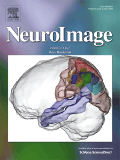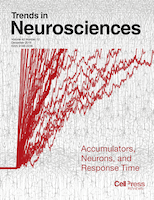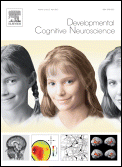
NEUROIMAGE
metrics 2024
Empowering Research with Open Access to Brain Discoveries
Introduction
NEUROIMAGE, published by Academic Press Inc Elsevier Science, is a leading international journal dedicated to advancing the fields of cognitive neuroscience and neurology. With an impressive impact factor that places it in the Q1 category for both disciplines, NEUROIMAGE stands at the forefront of disseminating high-quality research that employs advanced imaging methods to elucidate the workings of the human brain. As a pivotal platform since its inception in 1992, this journal has continued to thrive, embracing Open Access publishing since 2020 to ensure wider dissemination and accessibility of cutting-edge findings. With a Scopus rank of 7th in cognitive neuroscience and 13th in neurology, and situated in the 94th and 93rd percentiles respectively, NEUROIMAGE serves as an invaluable resource for researchers, professionals, and students alike seeking to explore the intricate relationships between brain structure and function. For more information, please visit their office at 525 B ST, STE 1900, SAN DIEGO, CA 92101-4495.
Metrics 2024
 2.44
2.44 4.70
4.70 6.10
6.10 418
418Metrics History
Rank 2024
Scopus
IF (Web Of Science)
JCI (Web Of Science)
Quartile History
Similar Journals

Brain Structure & Function
Pioneering Insights into Brain Anatomy and PerformanceBrain Structure & Function is a premier peer-reviewed journal published by Springer Heidelberg, focusing on the intricate relationships between brain anatomy and its functional implications. With a significant presence in the academic community, the journal is recognized for its high impact, evidenced by its rankings in the Q1 categories of Anatomy and Histology and its commendable position in the Neuroscience field. It has successfully maintained a convergence of research and innovation from 2007 to 2024, providing critical insights that drive forward our understanding of the brain. The journal's outstanding metrics, including a ranking of #6 in Anatomy and #18 in Histology within Scopus, highlight its role in shaping modern research. Offering open access options, Brain Structure & Function ensures that its cutting-edge findings and methodologies are accessible to a broad audience of researchers, professionals, and students eager to contribute to the evolution of neuroscience. With its comprehensive scope and commitment to high-quality research, this journal is an essential resource for anyone invested in the complexities of brain structure and their functions.

TRENDS IN NEUROSCIENCES
Shaping the Future of Neuroscience DiscoveriesTRENDS IN NEUROSCIENCES, published by CELL PRESS, is a leading journal in the field of neuroscience, offering cutting-edge insights and important developments in the rapidly evolving landscape of brain research. With an impressive Impact Factor and ranking in the top quartile (Q1) of the category for Neuroscience (miscellaneous), it is positioned as a vital resource for researchers and professionals seeking to stay abreast of the latest discoveries and trends from 1978 to the present. Specifically ranked #3 out of 113 in General Neuroscience by Scopus, this journal promotes the interdisciplinary exchange of ideas and knowledge, making it an essential platform for students and experienced scholars alike. Although it is not an Open Access journal, its value lies in its rigorous peer-review process and commitment to maintaining the highest standards of academic integrity. By continuing to explore the complexities of neural processes and behavior, TRENDS IN NEUROSCIENCES plays a crucial role in shaping the future of neuroscience research and education.

BRAIN RESEARCH
Unlocking the mysteries of the brain, one study at a time.BRAIN RESEARCH is a premier journal published by Elsevier, specializing in the intricate domains of neuroscience, developmental biology, and molecular biology. Established in 1966, this esteemed publication has become a cornerstone for researchers, professionals, and students dedicated to advancing our understanding of brain function and disorders. With an impressive impact factor and a consistent presence in the Q2 quartiles across key categories—such as Developmental Biology, Neurology, and Neuroscience—it stands out as an essential resource for disseminating innovative research and pioneering insights. The journal's scope encompasses both clinical and fundamental studies, fostering a multidisciplinary approach to the complexities of neural systems. Although it is not an open-access journal, BRAIN RESEARCH provides a vital platform for sharing progressive findings that can inspire future studies and contribute significantly to the evolutionary discourse in neuroscience. Based in the Netherlands, at RADARWEG 29, 1043 NX AMSTERDAM, BRAIN RESEARCH continues to shape the landscape of neuroscience research, inviting submissions that explore the latest discoveries and therapeutic strategies.

BRAIN TOPOGRAPHY
Innovative Research on the Topography of ThoughtBRAIN TOPOGRAPHY is an esteemed academic journal dedicated to the exploration of topographical mapping of brain activities, cementing its reputation as a cornerstone in the fields of anatomy, neurology, and radiology. Published by SPRINGER, this journal has been a vital resource since its inception in 1988, with a steadily increasing impact reflected in its 2023 rankings, including Q1 categories in Anatomy and Radiology. With its significant contributions to understanding cerebral structure and function through advanced imaging technology, BRAIN TOPOGRAPHY is essential for researchers, professionals, and students seeking to stay at the forefront of neuroscientific advancements. The journal benefits from its strong academic stature, positioned within the 60th to 71st percentiles across several Scopus ranks, further enhancing its visibility in an evolving research landscape. Although not an open-access journal, its rigorous peer-review process ensures the dissemination of high-quality research that significantly contributes to the scientific community. Set against the backdrop of a global landscape, this journal continues to shape discussions on cerebral topography, offering a platform for innovative studies and critical insights.

Frontiers in Neuroinformatics
Transforming Neuroscience with Cutting-Edge InformaticsFrontiers in Neuroinformatics is a prestigious open-access journal published by FRONTIERS MEDIA SA in Switzerland, dedicated to advancing the interdisciplinary field of neuroinformatics. Since its inception in 2007, the journal has played a crucial role in facilitating knowledge exchange among researchers and professionals, exploring the intersection of neuroscience, biomedical engineering, and computer science applications. With an impressive Q2 ranking in both Biomedical Engineering and Computer Science Applications, and a Q3 ranking in Neuroscience, the journal consistently showcases cutting-edge research and innovations that push the boundaries of our understanding of the brain and its computational models. Positioned prominently within the Scopus rankings, with a rank of #15/49 in Neuroscience (miscellaneous) and a 70th percentile standing, Frontiers in Neuroinformatics is essential reading for anyone engaged in this dynamic field. Researchers, students, and practitioners are encouraged to contribute to and leverage this accessible platform to foster collaboration and drive scientific progress.

Aging Brain
Exploring Neurobiology for a Healthier TomorrowAging Brain is a premier Open Access journal published by Elsevier, dedicated to advancing the understanding of the neurobiological changes associated with aging. Since its commencement in 2021, this journal has been pivotal in disseminating high-quality research that explores the intricate relationships between aging and cognitive functions, neurological disorders, and overall brain health. With a notable commitment to open accessibility, Aging Brain ensures that vital findings are available to a global audience, fostering collaboration and innovation in the field. Researchers, healthcare professionals, and students alike will find a rich repository of cutting-edge studies, reviews, and insights aimed at addressing the complexities of the aging brain. The journal stands as an influential platform for those passionate about enhancing the quality of life for the aging population, making it a valuable resource in gerontology and neuroscience.

Developmental Cognitive Neuroscience
Advancing understanding of the brain's developmental journey.Developmental Cognitive Neuroscience is a leading interdisciplinary journal published by ELSEVIER SCI LTD, dedicated to advancing the field of cognitive neuroscience with a specific focus on the developmental aspects of brain function and behavior. Since its inception in 2011, this Open Access journal has continued to thrive, gaining significant recognition with a remarkable impact factor that places it in the Q1 category of cognitive neuroscience, ranking 22nd out of 115 in Scopus. This enhances its visibility and accessibility to a global audience, including researchers, clinicians, and students keen on exploring the intricate relationship between cognitive development and neurological processes. The journal embraces a wide array of topics, from the impact of early life experiences on cognitive outcomes to neurodevelopmental disorders, fostering an enriching platform for disseminating high-quality research and innovative findings. As it progresses towards 2024, Developmental Cognitive Neuroscience remains pivotal in shaping future research and understanding in the field.

NeuroImage-Clinical
Shaping the Future of Neuroscience through Collaborative ResearchNeuroImage-Clinical is a premier open access journal published by Elsevier Science Ltd, dedicated to advancing the field of clinical neuroimaging and its applications in a variety of neurological disorders. With an ISSN of 2213-1582, this journal has established itself as a leading source of innovative research since its inception in 2012, now continuing through 2024. Recognized for its high impact, it occupies the top quartile (Q1) in prestigious categories such as Cognitive Neuroscience, Neurology, and Radiology, affirming its relevance in clinical and research settings. Its Scopus rankings further exemplify its significant contribution to the disciplines of Radiology and Neurology, consistently placing it among the top tiers of journals in these fields. This journal not only provides critical insights for researchers and professionals but also serves as a valuable resource for students, fostering an understanding of the complexities in neuroimaging techniques and their implications for patient care. With open access options ensuring broad dissemination of knowledge, NeuroImage-Clinical plays a pivotal role in enhancing collaboration and innovation within the global neuroscience community.

Journal of Integrative Neuroscience
Advancing Neuroscience Through Interdisciplinary InnovationWelcome to the Journal of Integrative Neuroscience, a prominent platform dedicated to advancing the field of neuroscience by fostering interdisciplinary research and innovation. Published by IMR PRESS, this open-access journal has been committed to disseminating high-quality research since its inception in 2002, with a vision to integrate various aspects of neuroscience, from theoretical foundations to applied methodologies, ultimately enhancing our understanding of the brain and nervous system. With an evolving presence in the academic community, the journal holds significant rankings, such as Q2 in Medicine and Q3 in Neuroscience for 2023, reflecting its growing impact and value to researchers and professionals alike. The journal is accessible globally, having adopted an open-access model in 2018, ensuring that vital neuroscience findings reach a broader audience without barriers. Positioned in Singapore and serving an international readership, the Journal of Integrative Neuroscience is your essential resource for the latest insights and discoveries in a rapidly evolving field.

Brain Imaging and Behavior
Innovating Understanding: The Nexus of Brain Function and BehaviorBrain Imaging and Behavior is a premier journal published by SPRINGER, dedicated to advancing the understanding of the relationship between brain function and behavior through innovative imaging techniques. Since its inception in 2007, the journal has provided a crucial platform for researchers and professionals in fields such as Behavioral Neuroscience, Cognitive Neuroscience, and Psychiatry and Mental Health. With an impressive ranking within the Q1 category in Radiology, Nuclear Medicine and Imaging and maintaining strong Q2 status in several other categories, the journal is positioned as a leading resource for groundbreaking research. The journal aims to disseminate high-quality studies that explore neurobiological underpinnings of behavior, utilizing cutting-edge imaging technologies. Although it is not an open-access journal, the visibility and impact of published works in Brain Imaging and Behavior continue to influence the scientific community significantly, underscoring the critical intersection between imaging science and neuroscience.